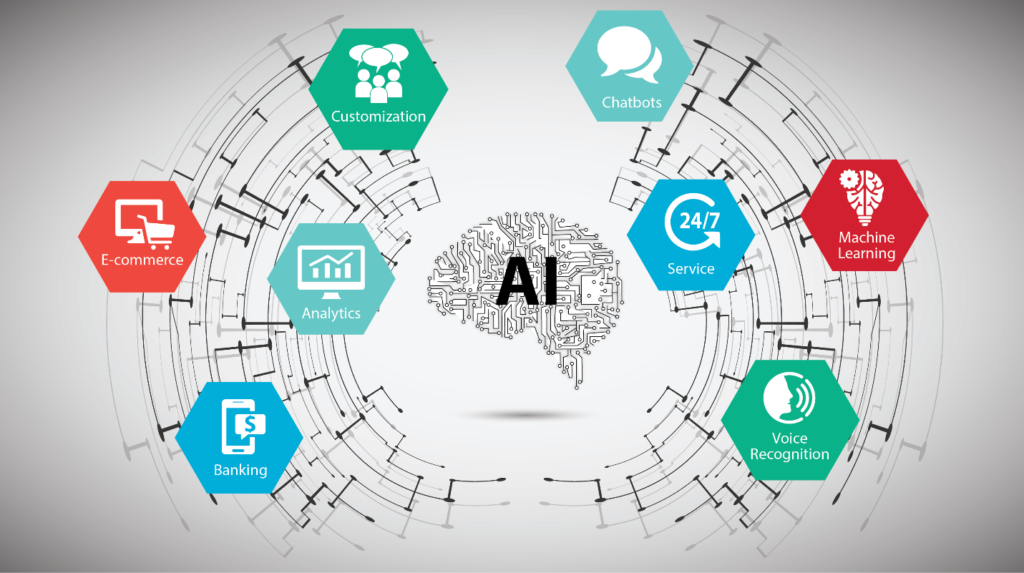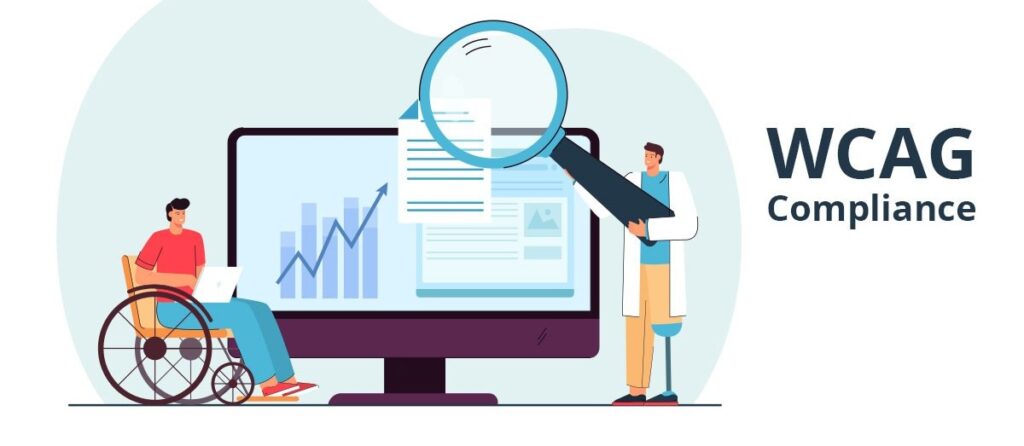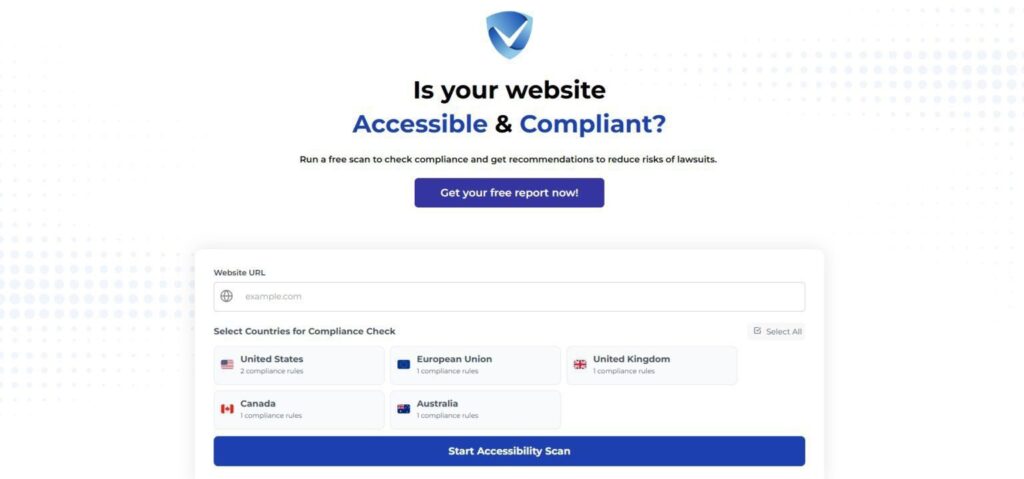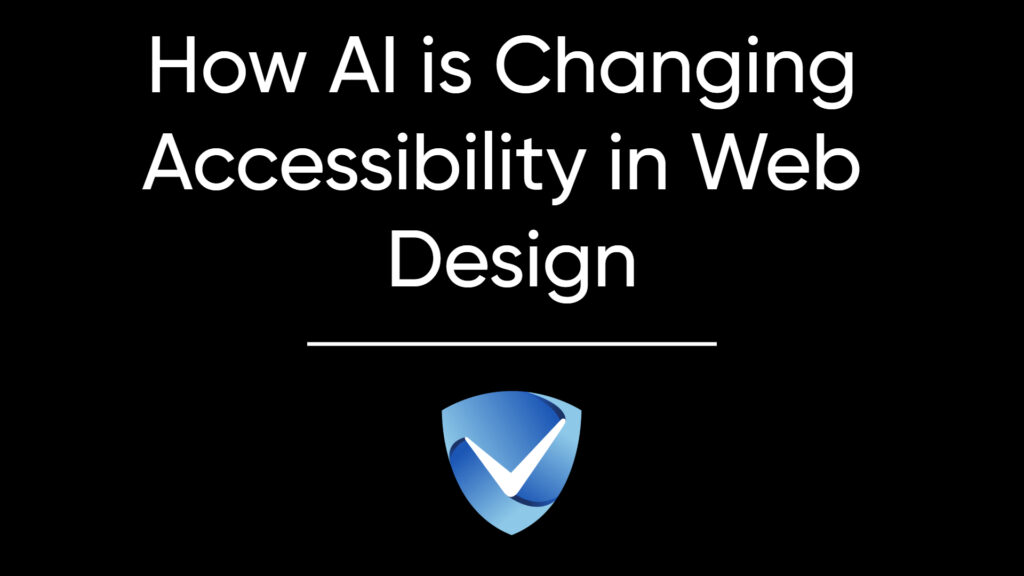AI Uses in Web Design
In recent years, the rapid evolution of artificial intelligence (AI) has sparked a transformative shift in various sectors, particularly in web design and accessibility. Accessibility in web design refers to the practice of ensuring that websites are usable and inclusive for individuals with diverse abilities, including those with disabilities. As the internet becomes increasingly central to daily life, building digital spaces that cater to all users is paramount. The integration of AI into web design provides innovative solutions that assist in creating more accessible online environments.
AI technologies, such as machine learning and natural language processing, enable designers to identify accessibility barriers more effectively and automate remediation processes. This not only streamlines the design workflow but also enhances the user experience for persons with disabilities. By employing AI, web designers can ensure compliance with accessibility standards, such as the Web Content Accessibility Guidelines (WCAG), fostering inclusivity and encouraging a broader reach to a diverse audience. Furthermore, the role of AI in accessibility extends beyond mere compliance; it encompasses the development of personalized user experiences that adjust according to individual needs.
Moreover, AI-driven tools can analyze user interactions, providing valuable insights into how people engage with digital content. This ability to gather and interpret user data allows for optimization of web interfaces and content delivery, leading to improved accessibility. As we delve deeper into this topic, we will explore specific AI applications that are revolutionizing accessibility in web design. From automated testing tools to responsive systems that adapt in real-time, the potential for AI to break down barriers and make the digital landscape more inclusive is vast and promising. It is essential to recognize these advancements as pivotal steps towards creating an accessible web for all.

The Role of AI in Accessibility Testing
The integration of Artificial Intelligence (AI) in accessibility testing is revolutionizing the way web developers ensure their sites comply with accessibility standards, particularly the Web Content Accessibility Guidelines (WCAG). These AI-powered tools are equipped with advanced algorithms that can analyze web content efficiently, identifying potential accessibility issues that may not be easily discernible through manual testing.
One of the primary advantages of utilizing AI in this context is its ability to automate the detection of common accessibility barriers, such as missing alternative text for images, inadequate color contrast, and improperly structured HTML elements. This automation significantly reduces the time and effort developers usually spend on manual assessments, allowing them to focus on implementing solutions instead. Furthermore, AI tools can continuously learn and improve their testing capabilities, adapting to new content and design trends, ensuring that accessibility remains a priority throughout the development cycle.
In addition to facilitating an efficient review process, AI can also generate actionable recommendations for developers, simplifying the remediation of identified issues. These insights are crucial for adherence to standards like WCAG, as they provide clear guidance on how to enhance accessibility. Some tools even simulate different user experiences, enabling developers to visualize how people with disabilities interact with their web content. This enhanced perspective fosters a more empathetic approach to design and development, ultimately leading to better outcomes for all users.
Through the intelligent application of AI technology, accessibility testing can become more robust and efficient, paving the way for a more inclusive web. As web standards evolve and the importance of accessibility grows, leveraging the capabilities of AI will be integral for developers striving to meet compliance requirements while ensuring a seamless experience for diverse users.
Automated WCAG Compliance Checks
In the realm of web design, ensuring compliance with the Web Content Accessibility Guidelines (WCAG) is a crucial aspect of creating an inclusive online experience. Artificial intelligence (AI) tools have emerged as vital resources that streamline the process of achieving WCAG compliance, significantly enhancing the efficiency and effectiveness of web development workflows. Two notable tools in this domain are Axe DevTools and LambdaTest.
Axe DevTools integrates seamlessly into the development environment, allowing developers to perform automated scans of their websites for accessibility issues. This tool is designed to identify violations of WCAG standards promptly. By automating this process, developers can detect and address accessibility barriers early in the development lifecycle, which not only saves time but also reduces the risk of overlooking critical compliance requirements. The insights provided by Axe DevTools enable a more focused approach toward rectifying accessibility challenges, thus fostering a more inclusive web presence.
On the other hand, LambdaTest takes a slightly different approach by offering cross-browser testing capabilities while embedding accessibility checks. This platform allows developers to test their web applications across multiple browsers and devices, ensuring consistent accessibility features are maintained regardless of user environment. By incorporating accessibility testing into broader cross-browser tests, LambdaTest aids in preventing compliance issues from being introduced at any stage of the development process.
By utilizing AI-powered tools like Axe DevTools and LambdaTest, developers can not only enhance their workflow efficiency but also ensure that web applications are accessible to all users. These tools facilitate rapid identification of potential compliance obstacles, enabling teams to address issues effectively and maintain adherence to WCAG standards throughout the development cycle.

AI-Powered Accessibility Tools
The integration of artificial intelligence in web design has led to the development of advanced accessibility tools that significantly enhance user experience for individuals with disabilities. Tools such as Microsoft Accessibility Insights and Accessibe are at the forefront of this innovation, offering comprehensive solutions that identify and address barriers on websites. These AI-powered tools utilize sophisticated algorithms and machine learning to analyze web content thoroughly, providing real-time assessments of accessibility compliance.
One of the most notable features of these tools is their capability for automatic alt text generation. This function represents a major advancement in web design, where images often lack descriptive text that aids visually impaired users. By using AI to generate contextually relevant alt text, Microsoft Accessibility Insights and Accessibe ensure that images are accessible, breaking down visual barriers and enhancing the overall inclusivity of web content.
Additionally, these tools possess strong contextual understanding. They not only identify technical issues—such as missing labels or non-compliant color contrasts—but also analyze the user experience in context, offering insights that empower developers to make informed decisions. This means that developers can receive actionable solutions tailored to specific accessibility challenges encountered on their websites, thereby streamlining the remediation process.
The impact of AI in creating accessible web design cannot be overstated. By equipping developers with innovative features and insights, tools like Microsoft Accessibility Insights and Accessibe enable them to build more inclusive digital spaces. These solutions are not merely compliance checkpoints but instead serve as essential resources for fostering accessibility in a meaningful way, ultimately leading to a more equitable online experience for all users.
Enhancing User Experiences with AI
Artificial intelligence (AI) is revolutionizing access to digital content by actively improving user experiences in web design. It plays a vital role in ensuring that websites are not only compliant with accessibility standards but also offer personalized solutions tailored to individual needs. By analyzing user behavior and preferences, AI technologies can dynamically adjust various website elements to create a more inclusive environment for all users.
One prominent example of this is the ability of AI systems to facilitate real-time adjustments to font sizes and color schemes based on user specifications. For instance, users with visual impairments can benefit from the automatic resizing of text for better readability. This capability enhances user experience significantly as it allows individuals to customize their digital interaction in a seamless manner. Such adaptability ensures that users can engage with content without encountering barriers that compromise their understanding or enjoyment of the material presented.
Furthermore, AI-driven tools can also analyze the surrounding context of a user’s interaction, allowing them to modify the layout of a webpage dynamically. When a user struggles with navigation, for example, the AI can recommend or implement adjustments that simplify pathways to content, making it easier to find desired information. These enhancements not only assist users with disabilities but also benefit the general audience by creating a smoother, more intuitive experience.
The integration of AI in web design sets a new standard for accessibility. Rather than viewing compliance as a static requirement, the focus shifts towards creating a solution that responds to the unique preferences of each user. This transformative approach emphasizes the potential of AI in fostering an equitable digital landscape where everyone can thrive, highlighting its significance in enhancing user experiences across various web platforms.

AI-Driven Assistive Technologies
The integration of artificial intelligence in web design has ushered in a myriad of innovative assistive technologies that significantly enhance accessibility for users with disabilities. One of the most impactful advancements is voice recognition systems. These tools allow users to navigate websites and interact with content using their voice commands, eliminating barriers for those with mobility impairments or dexterity challenges. With the ability to perform tasks such as searching for information, filling out forms, or even engaging in online conversations, voice recognition systems empower users to experience the digital world with greater ease and independence.
Furthermore, predictive text tools have emerged as a valuable resource for individuals with cognitive or learning disabilities. By anticipating a user’s input and suggesting relevant words or phrases, these systems significantly reduce the cognitive load involved in writing or searching for information online. This technology not only speeds up the process of communication but also minimizes frustration, promoting a smoother and more enjoyable online experience. Users can engage with content quickly, which further enhances their autonomy in web navigation.
Another notable development in AI-driven assistive technologies is the integration of AI algorithms in screen readers. These tools enhance the traditional experience by accurately interpreting website structure and providing verbal cues that help users comprehend the content hierarchy. They are capable of adapting to individual user preferences, ensuring that the information is presented in a manner that aligns with specific needs. The personalized experience offered by these advanced screen readers makes web content more accessible to diverse user groups, ultimately fostering a more inclusive internet.
By utilizing these AI-powered tools, web designers can create more accessible and user-friendly environments. The ongoing evolution of AI-driven assistive technologies promises not only to enhance the independence of users with disabilities but also to transform the overall landscape of web design, making it a more inclusive space for all individuals.
Ethical Considerations of AI in Accessibility
The integration of artificial intelligence (AI) in web design for improving accessibility presents a myriad of ethical considerations that must be addressed. One prominent concern is the risk of biases inherent in AI systems. These biases can stem from datasets used in training AI models, often leading to algorithms that perform inadequately for diverse user groups. For instance, if an AI is trained predominantly on data from individuals without disabilities, it may overlook the unique requirements of users with visual, auditory, or cognitive impairments, thereby compromising the very aspect of accessibility it aims to enhance.
Additionally, inclusivity in design is paramount. AI technologies should not merely aim to automate tasks but also ensure that they cater to the needs of all users. This necessitates a design approach that incorporates feedback and experiences from individuals with disabilities throughout the development process. By actively involving these users, designers can create AI-driven tools that faithfully reflect a wide spectrum of accessibility needs, promoting true inclusivity and functionality.
Furthermore, transparency and accountability in AI development are crucial. Users should be informed about how AI systems operate, including the data sources utilized and the decision-making processes involved. This transparency fosters trust among users and stakeholders, inspiring confidence that the technologies are developed ethically and responsibly. Accountability mechanisms should also be established to address failures or shortcomings of AI accessibility solutions, ensuring that developers remain answerable to end-users and the broader community. Addressing these ethical concerns is essential for harnessing the full potential of AI in fostering a more accessible web environment.
Bias in AI Systems
The effectiveness of artificial intelligence (AI) in enhancing accessibility in web design largely depends on the quality and diversity of the training data used to develop these systems. Bias in AI systems is a significant concern, as it can lead to unequal access and inadequate solutions, particularly for marginalized communities. When AI systems are trained on homogeneous datasets that reflect the experiences and needs of a limited demographic, they may inadvertently perpetuate existing biases and exclude certain user groups, resulting in accessibility solutions that fail to address a wide array of needs.
For example, if an AI model is predominantly fed data from able-bodied individuals, it may not recognize or properly accommodate the diverse range of challenges faced by individuals with disabilities. This lack of inclusivity can cause the resulting accessibility tools to be less effective, potentially alienating users who do not fit the narrow parameters of the training data. Therefore, it is crucial for developers and organizations to prioritize the use of diverse datasets, ensuring that the AI systems they create are not only technically proficient but also socially responsible.
To mitigate bias, it is essential to incorporate input from diverse user groups throughout the AI development process. This can include gathering feedback from individuals with various disabilities, as well as considering cultural, socioeconomic, and linguistic differences. By fostering collaboration among a broad spectrum of users, developers can gain insights that inform the design of more equitable and effective accessibility solutions. In effect, addressing bias in AI systems not only improves their functionality but also promotes an inclusive web environment, ensuring that accessibility features cater to the needs of all users, regardless of their background or abilities.
Try Our Free Website Accessibility Scanner

The effectiveness of artificial intelligence (AI) in enhancing accessibility in web design largely depends on the quality and diversity of the training data used to develop these systems. Bias in AI systems is a significant concern, as it can lead to unequal access and inadequate solutions, particularly for marginalized communities. When AI systems are trained on homogeneous datasets that reflect the experiences and needs of a limited demographic, they may inadvertently perpetuate existing biases and exclude certain user groups, resulting in accessibility solutions that fail to address a wide array of needs.
For example, if an AI model is predominantly fed data from able-bodied individuals, it may not recognize or properly accommodate the diverse range of challenges faced by individuals with disabilities. This lack of inclusivity can cause the resulting accessibility tools to be less effective, potentially alienating users who do not fit the narrow parameters of the training data. Therefore, it is crucial for developers and organizations to prioritize the use of diverse datasets, ensuring that the AI systems they create are not only technically proficient but also socially responsible.
To mitigate bias, it is essential to incorporate input from diverse user groups throughout the AI development process. This can include gathering feedback from individuals with various disabilities, as well as considering cultural, socioeconomic, and linguistic differences. By fostering collaboration among a broad spectrum of users, developers can gain insights that inform the design of more equitable and effective accessibility solutions. In effect, addressing bias in AI systems not only improves their functionality but also promotes an inclusive web environment, ensuring that accessibility features cater to the needs of all users, regardless of their background or abilities.



